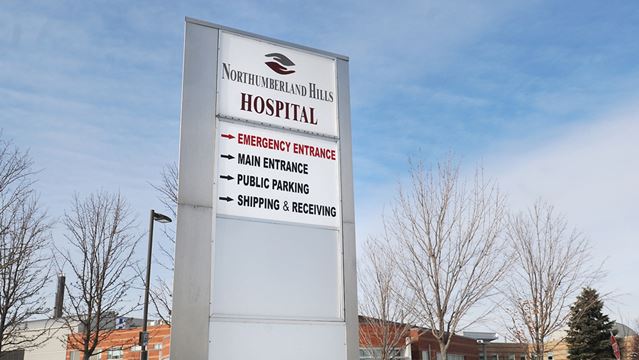
Coming off of a spate of imposed reviews led by the Central East Local Integrated Health Network (LHIN) over the past few years, the Northumberland Hills Hospital is currently in the midst of its strategic planning process, having consulted with more than 450 stakeholders.
In a recent interview, board chairman Jack Russell and Chief Executive Officer Linda Davis agree the strategic plan is a logical next step. The smidgen of a budget surplus announced in early March is unquestionably a highpoint and bodes well for the future.
So, where are the dark clouds?
A couple of things jump to mind.
The vast array of unknowns facing health care providers in the community continues to make it a crazy juggling act.
A surge of patients first announced in December continues. The hospital is funded to operate 92 beds, but demand forced it to open an additional eight to 10 beds. Opening beds is not difficult in one sense because the hospital has a capacity of 137 beds. It just doesn’t use them all.
The problem is the additional cost. Every time a bed opens, there is all the staff and services associated with that extra bed. It doesn’t take much to watch the surplus disappear. And, there is no guarantee of emergency funding from the province.
A major accident like the one in Lansdowne last week or an outbreak of mumps, like the one in Toronto, could tax the system. Demand fluctuates; funding doesn’t.
In the bigger picture, the co-ordination of services between all health care providers within Northumberland County is critical. Ask anyone with an elderly family member who can’t find long-term care.
There are efforts for local providers to coordinate the wide range of services offered. Despite best efforts at all levels and all providers, too many people fall through the cracks. No question, things have improved. But talk to any official, and there is still work to be done.
There is an incredible opportunity. With Community Care Access Centres restructured under the LHINs; county council planning for a new Golden Plough retirement residence, and the hospital undergoing its strategic planning, there is an opening for a healthcare master plan for Northumberland to weave the myriad of providers and services to meet the needs of the community.
But before the bureaucrats at the LHIN get all giddy, it should be done by existing local organizations with elected boards who are accountable to residents.
To this end, the hospital should provide leadership to oversee this initiative. With the right resources, local boards and stakeholders could create a seamless system for the county. The sub-regional LHIN proposed for Northumberland can assist with money and expertise not found locally.
The framework and alliances of health care providers in the community have already begun to align. With sufficient resources and provincial support, a local solution to a fully integrated system for Northumberland could be found by organizations fully accountable to residents and not political masters tugging on a lengthy leash in office towers in Toronto.
Originally published: March 22, 2017


